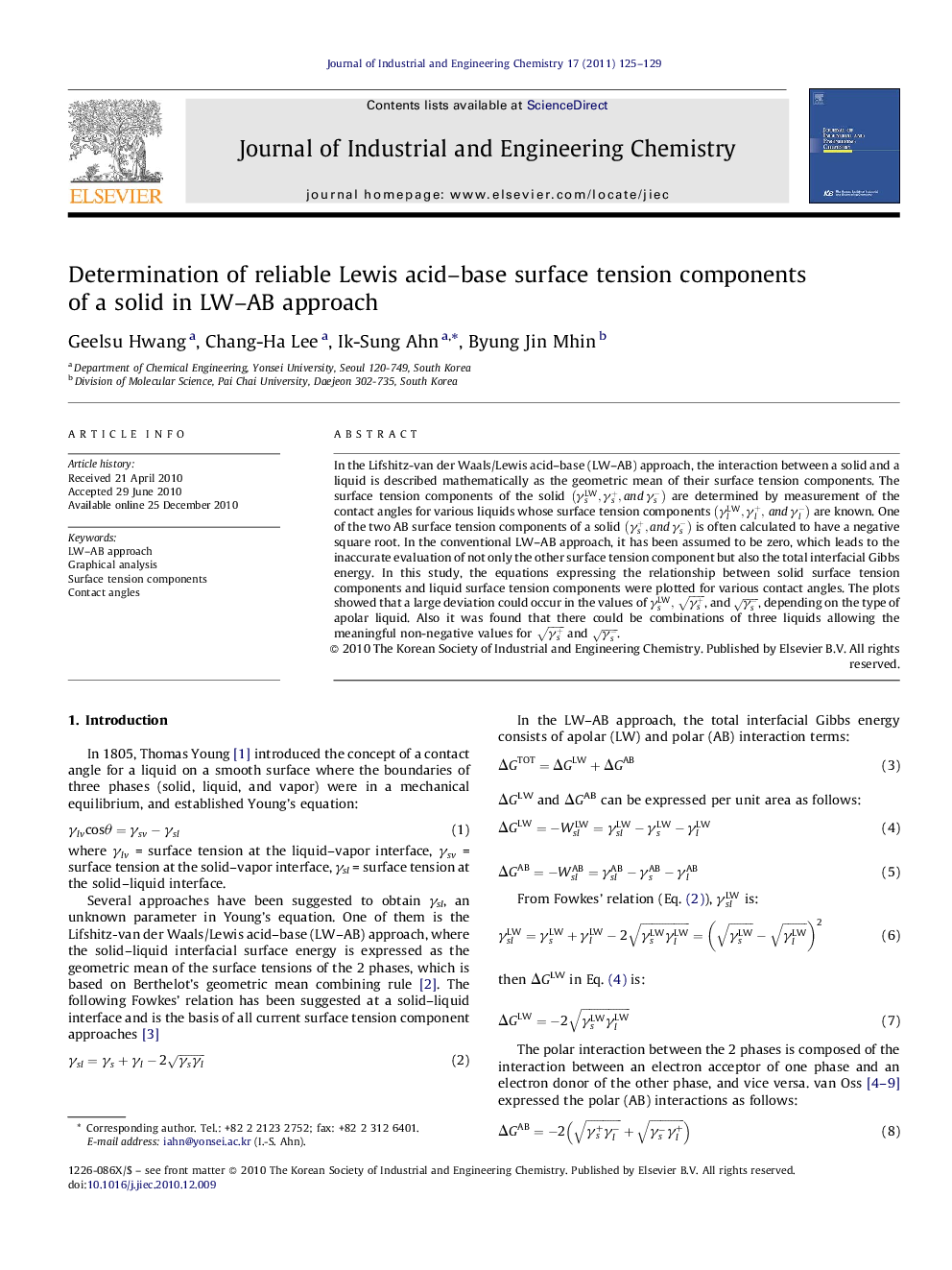| Article ID | Journal | Published Year | Pages | File Type |
|---|---|---|---|---|
| 229167 | Journal of Industrial and Engineering Chemistry | 2011 | 5 Pages |
In the Lifshitz-van der Waals/Lewis acid–base (LW–AB) approach, the interaction between a solid and a liquid is described mathematically as the geometric mean of their surface tension components. The surface tension components of the solid γsLW,γs+,and γs− are determined by measurement of the contact angles for various liquids whose surface tension components γlLW,γl+, and γl− are known. One of the two AB surface tension components of a solid γs+,and γs− is often calculated to have a negative square root. In the conventional LW–AB approach, it has been assumed to be zero, which leads to the inaccurate evaluation of not only the other surface tension component but also the total interfacial Gibbs energy. In this study, the equations expressing the relationship between solid surface tension components and liquid surface tension components were plotted for various contact angles. The plots showed that a large deviation could occur in the values of γsLW,γs+, and γs−, depending on the type of apolar liquid. Also it was found that there could be combinations of three liquids allowing the meaningful non-negative values for γs+ and γs−.
